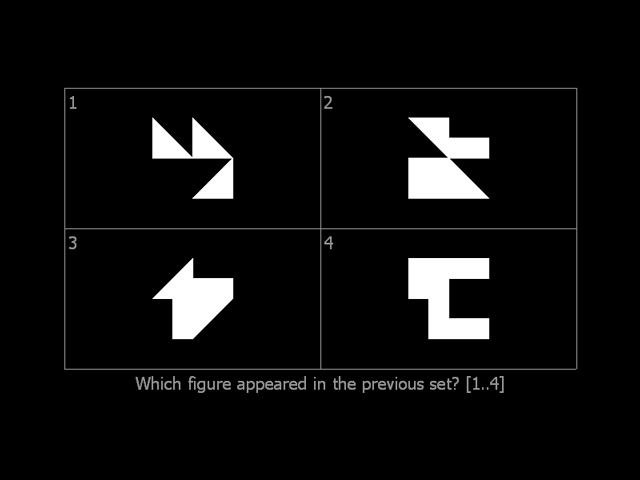The task is divided into a study phase in which the material to be remembered is presented and a test phase in which recognition is tested. The task is split up in a matrix of 4 versions (words vs. figures and simultaneous vs. serially presentation). In this way an attempt has been made to tap verbal working memory vs. nonverbal working memory. The stimulus duration equals the number of items presented times 1 second. Two practice items precede the test. One test consists of 24 items. Reaction times are measured, but this is not and should not be explicitly mentioned in the instruction. Responses are given by typing the correct number on the keyboard. Whenever a wrong key is pressed a low beep is heard. The testee can again press one of the requested keys (reaction time is not affected).
The words are randomly selected from a pool of about 100 words (differing according to the specific language employed). 50% Of children of 7 years old should know these words. The figures are randomly built up from basic elements of triangles and squares, and are difficult to “label”. This latter requirement can never be fully met, of course, but time to think of a label is very short in this task.
Different presentations are possible, from 2 to six words, combined with 2 to 4 figures. The easier versions are meant for the younger children and elderly people who have difficulties with the extended version.

Recognition simultaneously 6 words English

Recognition simultaneously 4 words Spanish

Recognition simultaneously 3 words German

Recognition simultaneously 2 words Suomi

Recognition simultaneously 4 Figures
